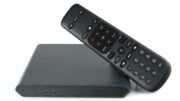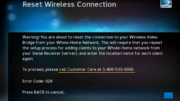It’s been about a year or so now. And I think it’s time we all sit down and admit it. Native mode is not coming back.
What was native mode?
Native mode was a special mode that DIRECTV DVRs had starting in about 2006. It’s part of what really distinguished DIRECTV’s passion for quality and user choice.
In the mid-2000s, most cable companies were just starting to wade into high defintion. Most used what was called at the time “HD-Lite” which was an image normalized to about 1080×1080 pixels. It didn’t matter what resolution the program was created in, it was changed to that weird resolution that was narrower than HD but just as tall. Cable companies did this because they needed consistency throughout their systems and using this lower-quality option let them have more channels.
At the time — and still true today — DIRECTV used whatever signal was given to them and only re-compressed it to use more efficient compression. If the channel was originally in 720p, like Fox, ABC, and ESPN, that’s how DIRECTV sent it to your receiver. If it was in 1080i, like NBC, CBS, and most other non-Disney channels, that’s how you got it too.
Most cable boxes of the time gave you a choice of output resolution. DIRECTV went one step further, giving you a choice to let your TV decide. They called this “Native Mode.” It meant that if you received a broadcast in 720p, it was sent to the TV in 720p. If you received it in 1080i, that’s how it was sent. Your TV did all the work to display it.
Why people liked native mode
People with very expensive TVs liked native mode because they said the images looked better. Their TVs did a better job normalizing and scaling the images than the DIRECTV DVR. I don’t know if that was ever really true or if it was just something that people who bought $15,000 TVs told themselves. I wouldn’t know because I never had a $15,000 TV.
Why people didn’t like native mode
Most regular folks found that native mode added about 3 seconds to most channel changes. This was a pain point considering that DIRECTV’s channel changes were slower than cable’s anyway. It’s just a function of having multiple satellites that you need to tune.
Why (and when) I used native mode
I used it on my 4K receiver but not on my HD ones. With the HD ones I didn’t see much improvement. But with my 4K one, I saw better quality on 720p channels. The reason is simple: you get an even multiple when you scale 1280×720 to 3840×2160. Every old pixel takes up 3 new pixels. When you scale from 1280×720 to 1920×1080, and then to 3840×2160, there’s no even multiple so everything looks a little more blurry.
Plus, my 4K TV was pretty new and it only added about a second to each channel change.
And then one day, it just went away.
Here’s an early screen capture from when DIRECTV switched to its new menu. It’s what you get when you press MENU, then Settings, then Display, then Video:

Here’s a similar screen capture today:

There used to be four settings, and the top one was called “Native.” Now there are three settings and “Native” is gone. No explanation, it just left.
In the year or so since, it hasn’t come back. And it probably won’t. My guess is that it’s one of several features introduced in the last 15 years that weren’t used very often and which created problems for AT&T’s massive call center operation.
And at this point, I guess I don’t miss it
Here’s the honest truth: I don’t miss Native Mode. It did help improve the quality of my 720p channels, but with a 60″ TV — pretty much the smallest you can buy from a major manufacturer — 720p looks pretty bad no matter what you do to it. I sure wish that ESPN, Disney, and ABC would start broadcasting in 1080i, especially since their streaming content is always that resolution or higher. It’s just their broadcasts that aren’t.
I also find that regardless of the TV, as long as you’re working with a major brand, the scaling is pretty good. The only way it could be better is if there were some sort of AI involved.
You know, that would be a good idea for an article. I ought to write that. Imagine using AI for video scaling.
In the meantime, check out the great selection of products at the newly updated SolidSignal.com.





